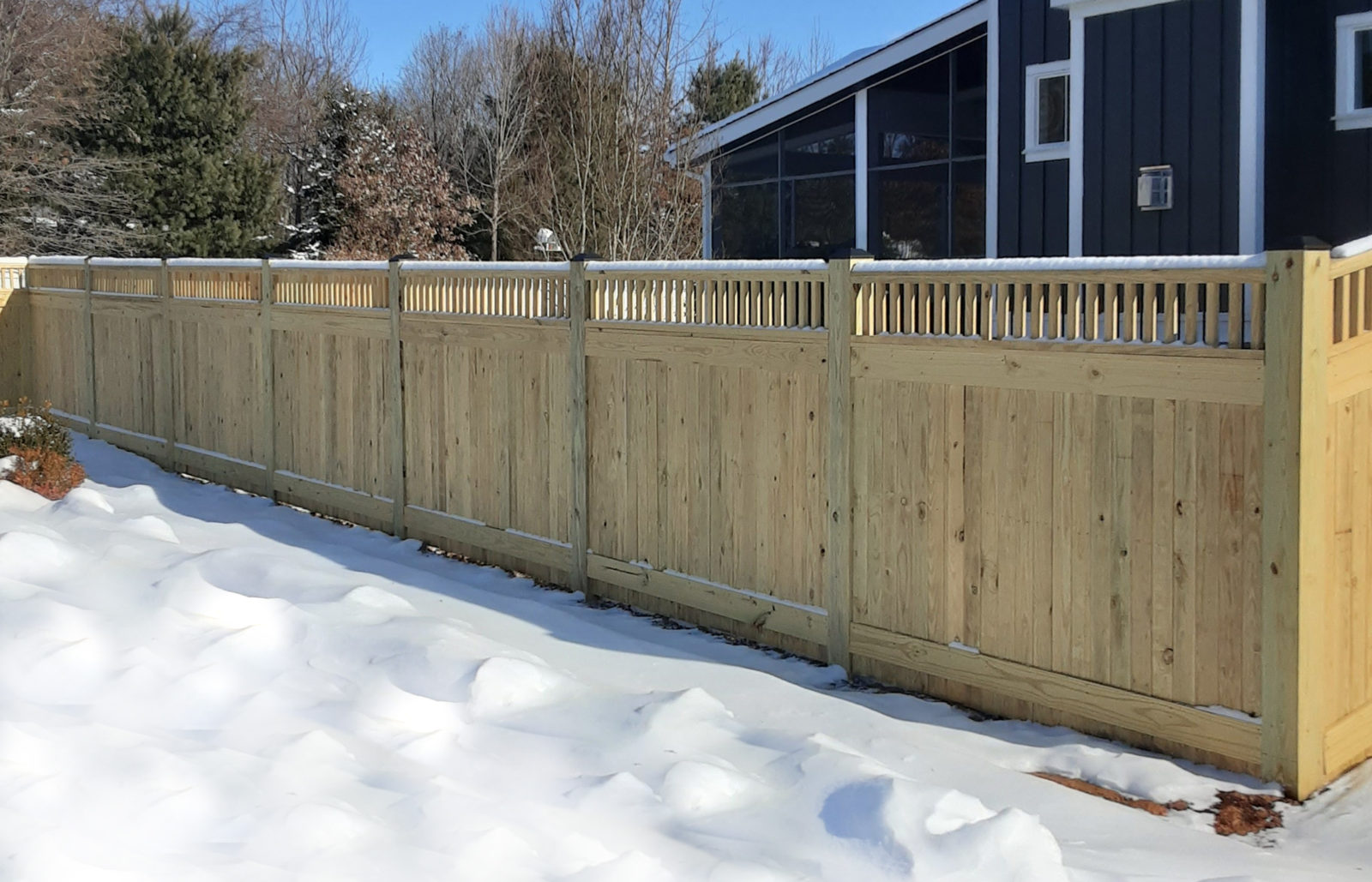According to the Old Farmer’s Almanac map, the state of Maryland straddles the line between a mild and snowy winter, and a cold and snowy season. If you believe the almanac’s predictions, this year calls for more snow than last year, with flurries falling in November. Winter can be tough on fences, as the cold, moisture, and winter storms can take a toll on their durability. When choosing the right fence for your property, it’s essential to consider how different materials hold up during the winter months. Though Maryland tends to have pretty mild winters, it’s always wise to compare the three popular fencing materials—vinyl, wood, and aluminum—to help you make an informed decision on which one is the best fit for your winter needs.
Vinyl Fencing
Vinyl fencing is known for its durability and resistance to many weather conditions, including winter. Vinyl fences are highly resistant to moisture, which is crucial during winter when snow and rain are common. Unlike wood, vinyl does not absorb water, preventing issues like rot, mold, and swelling. Vinyl remains stable in cold temperatures, and it doesn’t become brittle or prone to cracking as some other materials might. When it comes time for one of Maryland’s big snowstorms, vinyl fencing can handle the weight of snow without warping or bending. However, in very extreme cases of snow accumulation, it’s advisable to clear the snow to prevent any undue stress on the fence.
Wood Fencing
Wood fencing can be a beautiful, more natural addition to your property, but it requires some attention and care to maintain its durability during the winter months. In general, moisture can seep into wood fencing, potentially causing rot and decay, though the type of wood you choose can impact its winter durability. Some hardwoods, such as cedar and redwood, are naturally more resistant to rot. If you do prefer the look of a wood fence, you’ll definitely need to keep up with yearly maintenance. Properly sealing and staining your wood fence can significantly improve its longevity, and a quality sealant helps to protect the wood from moisture. Staining not only adds color, but also provides an additional layer of protection against the elements. Clearing snow from your fence is essential, especially after heavy snowfall. The weight of accumulated snow can strain the fence, leading to warping or breakage. Simply use a snow shovel or a soft broom to gently remove any snow from your wood fence.
Aluminum Fencing
Though pricier than other fencing materials, aluminum fencing is a durable and low-maintenance option that performs well in winter weather conditions. Aluminum fencing is highly resistant to corrosion and rust, making it an excellent choice for areas with heavy moisture, snow, and ice. Unlike steel or iron, aluminum does not rust, ensuring long-term durability. Additionally, aluminum remains stable in cold temperatures and does not become brittle. It can withstand freezing conditions without risk of cracking or warping, unlike wood. As the sturdiest fencing material, aluminum fencing can handle the weight of snow without deforming or sustaining damage. It’s also designed to withstand high winds, ensuring that your fence remains stable during winter storms!
Contact Fence & Deck Connection at 410-757-5511 if you’d like to invest in new fencing before harsh winter weather arrives. Whether you choose vinyl, wood, or aluminum, you can rest easy knowing your fence is backed by our lifetime structural warranty! To learn more about our many fence and deck options customizable to your needs, visit www.fenceanddeckconnection.com.

